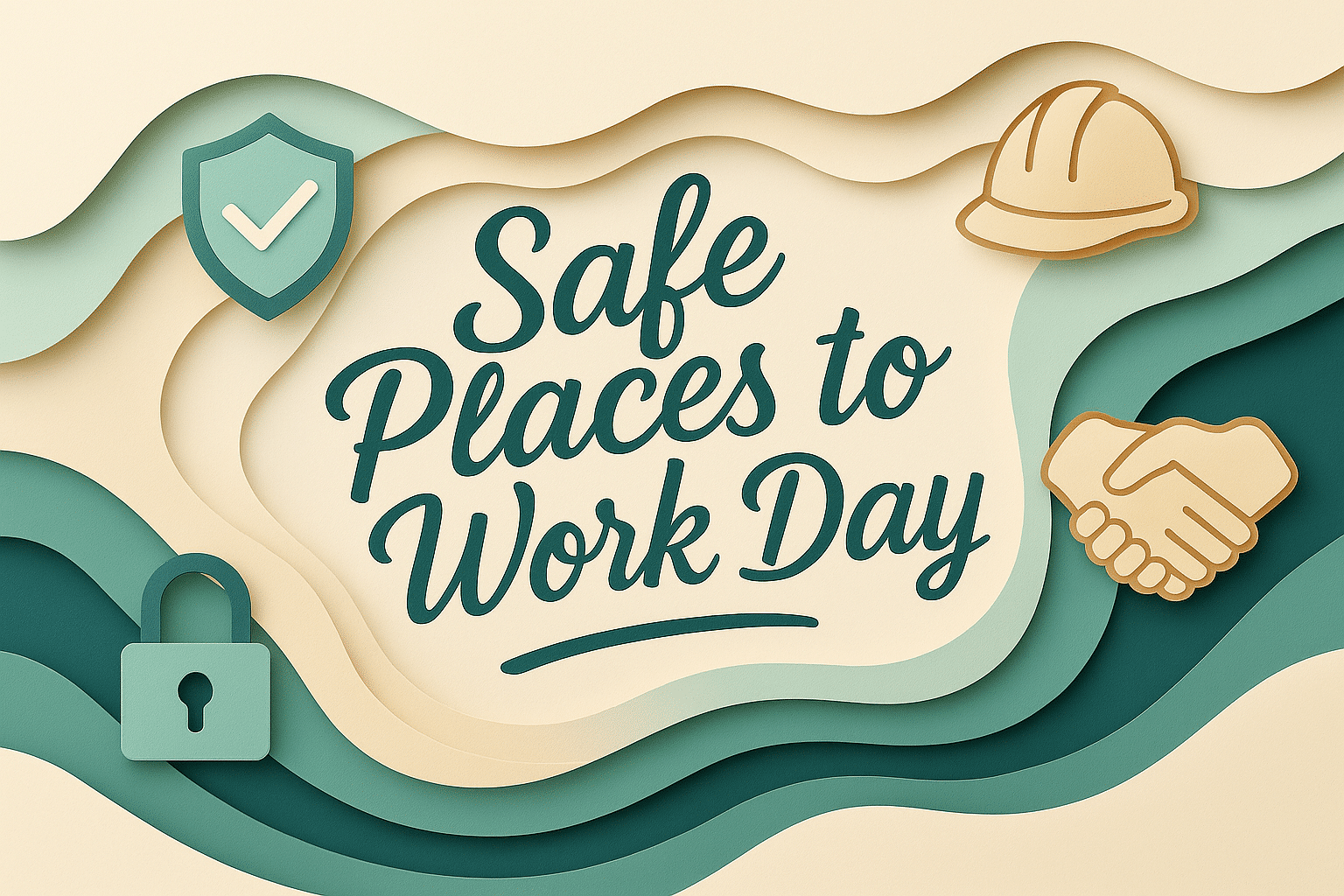What is Safe Places to Work Day?
Safe Places to Work Day is observed each year in multiple countries to highlight the importance of workplace safety. The day focuses not only on physical safety but also on mental and social well-being in the workplace. From office spaces to factories, the emphasis is on creating environments where people feel secure, respected, and supported. The event raises awareness about risks such as bullying, stress, and discrimination, in addition to traditional topics like fire safety or ergonomics.
In the Netherlands, more companies are recognizing this day each year. Workshops are held on topics such as respectful behavior, conflict prevention, and the role of confidential advisors. Labor unions, human resources departments, and occupational safety specialists often use the day to adjust policies or launch new initiatives. It is a day that reinforces the message that workplace safety is not just about preventing accidents but about building a culture of trust and inclusion. This focus has become an integral part of how organizations approach their working environments.
History and Origin
Safe Places to Work Day grew out of rising concerns about emotional strain, exclusion, and harmful behavior at work. In several countries, unions and safety networks had started small independent projects that eventually evolved into a shared annual moment of reflection and action. People needed a clear and recognizable day to address workplace culture beyond legal or technical regulations.
Some of the first campaigns followed widespread media attention around cases of harassment and abuse in professional settings. These events revealed the need for better support systems, clearer policies, and cultural change in many sectors. As the idea of the day gained momentum, organizations began to collaborate on toolkits, training sessions, and official guidelines. The result is a structured and widely adopted observance that helps workplaces start difficult but essential conversations.
Who participates in Safe Places to Work Day?
- HR professionals: They organize surveys, discussion sessions, and policy reviews to help improve workplace culture. Their leadership on this day can set a new tone for the entire organization.
- Healthcare and education institutions: These workplaces often rely on close teamwork and emotional safety. The day provides a valuable chance to explore difficult topics and update procedures.
- Unions: They raise awareness around workers’ rights and push for better legal protections and enforcement. Many also publish reports or organize public events.
- Executives and team leaders: Senior staff use this day to show commitment to employee well-being. They may sign agreements or publish internal letters addressing safety goals.
- Employees: Workers from all levels join in through feedback sessions, story sharing, or by taking part in awareness campaigns. Their involvement is crucial to lasting improvements.
Slogans and Themes
Common slogans for Safe Places to Work Day include phrases like “Everyone Deserves a Safe Workplace” and “Speak Up for Respect.” Each year often comes with a new theme that shapes the message and activities, such as “Recognize the Boundaries” or “From Rules to Culture.” These themes are designed to bring focus to one key issue, making the day more actionable for teams and leaders. Through thoughtful messaging, the campaign connects with people at all levels of an organization. It also encourages follow-up beyond just one day.
Colors, Symbols, and Patterns
Colors
- Green: Represents safety, care, and positive growth within the workplace.
- White: Symbolizes openness and transparency, especially in communication.
- Blue: Stands for trust, calmness, and professionalism.
Symbols
- Shield: Suggests protection against harm or mistreatment in professional settings.
- Open hand: Stands for approachability and the ability to set clear boundaries.
- Circle of people: Represents inclusion and shared responsibility for safety.
Patterns
- Interlocking lines: Emphasize collaboration and mutual support.
- Network-like visuals: Reflect how policies, people, and processes connect.
- Soft gradients: Suggest the shift from toxic to healthy environments.
Most used hashtags
- #safeatwork
- #workplaceculture
- #respectmatters
- #trustatwork
- #safeplacestowork
How do you celebrate Safe Places to Work Day?
- Host a team dialogue: Create space for people to express concerns, share stories, and explore what safety means to them.
- Invite a guest speaker: Bring in someone with expertise on topics like workplace integrity or emotional safety.
- Make it visible: Decorate shared spaces with posters, signs, or colors that reinforce the message of safety and respect.
- Launch an action plan: Use this day to begin real change by outlining specific goals for improving workplace culture.
- Collect stories: Encourage people to anonymously or openly describe moments they felt safe or unsafe at work.
Why is Safe Places to Work Day important?
A safe workplace allows people to perform better, speak freely, and support each other. This day highlights that true safety goes beyond written policies and includes how people actually treat one another. It brings silent issues into the open, making it easier to prevent harm and build trust. By taking time to reflect and act, organizations make it clear that employee well-being is not a side issue but a priority.
It also creates a platform for people who might otherwise not speak up. Many employees do not report issues because they fear backlash or believe nothing will change. This day breaks through that fear by opening a door to real dialogue. In doing so, it contributes to healthier teams, less stress, and a stronger sense of community. Companies that take Safe Places to Work Day seriously show their commitment to people, not just productivity.
Features
Contact Info
July 27: Safe Places to Work Day
Why do you keep falling for the same type?
Read the article Lovemaps: the hidden blueprint of our love.

